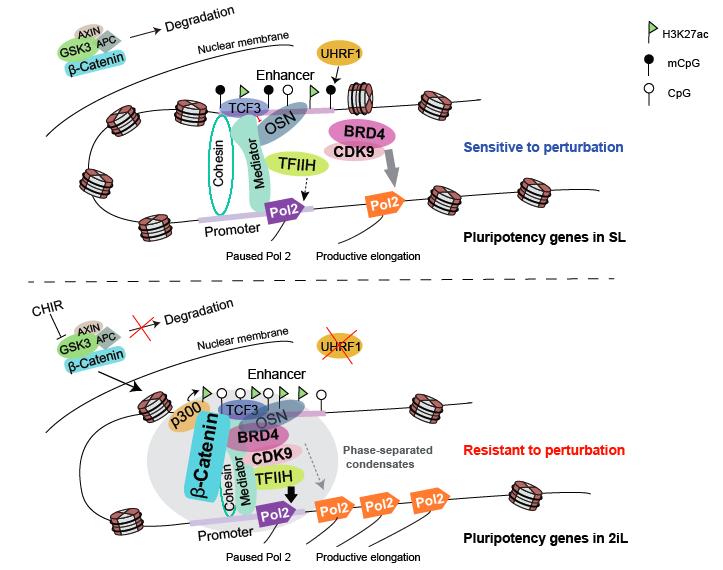Researchers found a new transcriptional mechanism regulating mouse ground state pluripotency
The researchers reported that, in 2iL, β-catenin supplies transcriptional co-regulators at pluripotency loci. This selectively strengthens these loci, rendering them addicted to transcription initiation for productive gene body elongation in detriment to Pol2 pause release mediated by the master regulators BRD4 and CDK9. In contrast, self-renewal/proliferation is highly dependent on Pol2 pause release and, hence, sensitive to BRD4/CDK9 inhibition in both conditions.
These findings help to explain how pluripotency gene transcription is selectively reinforced in the ground state to protect against exogenous perturbation.
To explore whether the link between Wnt/β-catenin signaling, transcription initiation, and BRD4 inhibitor resistance applies to other contexts, particularly cancer, the researchers tested this phenomenon in a widely used leukemia cell line called THP1. They found that Wnt activation also induced resistance to BRD4 inhibitor in THP1 cells, which also became more sensitive to transcription initiation inhibition.
This study explains how mouse pluripotency is reinforced in the ground state and also provides a general model for transcriptional resilience/adaptation upon network perturbation in other contexts, especially in cancer.

A model showing transcriptional mechanism of pluripotency genes in SL and 2iL.
Contact:
Miguel A. Esteban, Ph.D, Principle Investigator
E-mail: miguel@gibh.ac.cn
Link: https://advances.sciencemag.org/content/6/29/eaba1593
Attachment Download:
-
Contact
-
Reference
-
Related Article